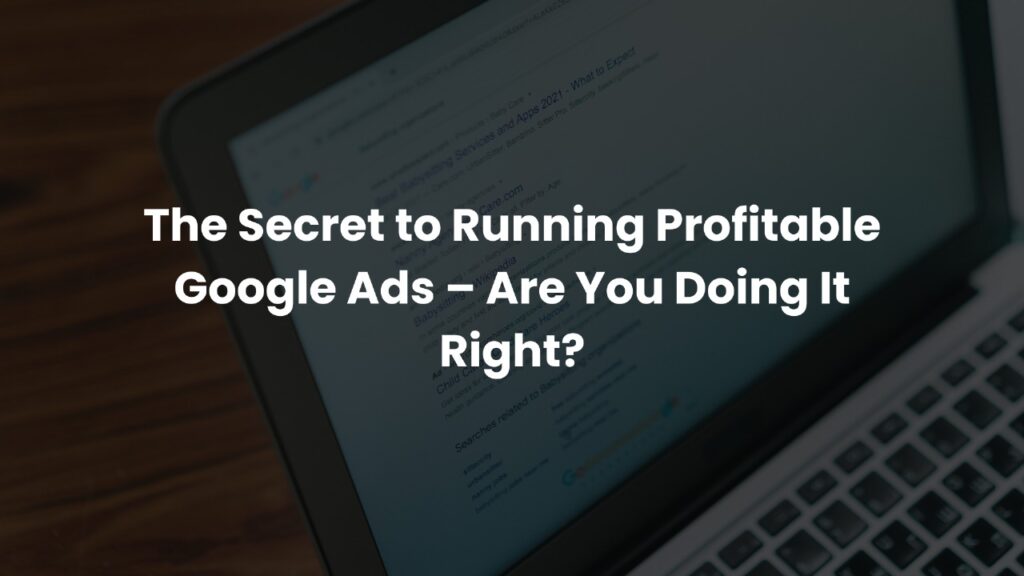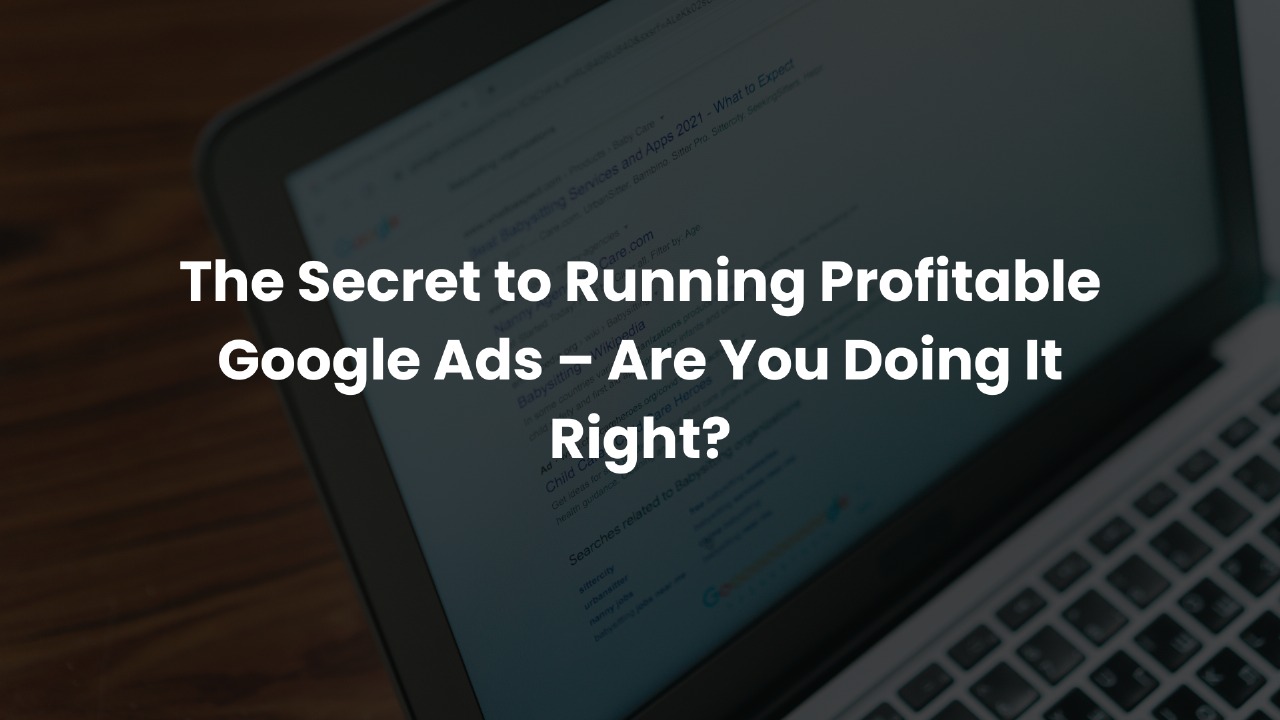
- Byte Legions
- Digital Marketing
The Secret to Running Profitable Google Ads – Are You Doing It Right?
Why Google Ads Still Work in 2025
Let’s be real – if you’re not using Google Ads, you’re probably leaving a bucketload of money on the table. With over 8.5 billion searches happening every single day, Google Ads still rules the digital marketing space. It gets your business in front of high-intent customers when they’re searching with their wallets out. That’s powerful.
The Common Pitfalls Most Businesses Face
But here’s the catch – most people get it wrong. They boost ads without a strategy, target everyone and their cat, burn cash on broad keywords, and then complain it “doesn’t work.” 😬 Sound familiar?
This guide spills the beans on how to flip the script and make Google Ads actually work for your bottom line.
Understanding the Basics of Google Ads
What Are Google Ads?
Google Ads is Google’s advertising platform where you bid on keywords to show your ads on the search engine results pages (SERPs), YouTube, Gmail, and more. Pay-per-click (PPC) is the name of the game – you only pay when someone clicks your ad.
How the Google Ads Auction Works
Every time someone searches, an auction happens in milliseconds. Google decides whose ad appears based on:
- Your bid
- Your ad quality
- The expected impact of ad extensions
Importance of Quality Score
Your Quality Score (on a scale of 1–10) impacts how much you pay and where your ad shows. Higher score = cheaper clicks + better placement. Treat it like your credit score of ads.
Keyword Research – The Real Game Changer
Short-Tail vs Long-Tail Keywords
“Shoes” is a short-tail keyword – massive competition, vague intent. “Buy white running shoes in Sydney” – that’s long-tail. More specific, less competition, higher intent. You want more of the latter.
Using Tools Like Google Keyword Planner & SEMrush
These tools are your best mates for finding high-volume, low-competition gems. Don’t guess. Research. Test. Repeat.
Intent-Based Keyword Targeting
Not all keywords are created equal. Focus on transactional intent (e.g., “hire Odoo consultant near me”) rather than just informational ones like “what is Odoo.”
Crafting High-Converting Ad Copy
Headlines That Hook
Your headline is your first impression. Make it pop. Use power words like “Free,” “Now,” “Top,” “Proven.” And don’t forget to include your keyword!
The Business Benefits of a Fast Website
Get to the point. Highlight your offer, benefits, and what makes you different. End with a strong call-to-action like “Get a Free Quote” or “Try Now.”
The Power of Emotional Triggers in Ads
Use fear, FOMO, urgency, or curiosity. Stuff like “Limited Seats Left” or “You’re Missing Out On Easy ROI” taps into the brain’s emotional side.
Targeting the Right Audience
Demographics and Interests
Dial in your audience based on age, gender, income, and even parenting status. Don’t target everyone – target the right one.
Custom Audiences and Remarketing
Create custom audiences based on site visitors or uploaded customer lists. Remarketing = magic. These people already know you. Bring them back!
Location & Device Targeting
If your product only works in Sydney or only makes sense on desktop – target accordingly. Be surgical.
Budgeting Smart – Not Just Spending
Daily vs Monthly Budgets
Plan ahead. Set a sensible monthly budget, then break it into manageable daily caps so you don’t blow it all on day one.
How to Test and Scale Campaigns
Start small. Test different ads, keywords, and audiences. Once you find what clicks, scale that baby up!
Avoiding Wasted Spend
Watch out for keywords that burn cash but bring no sales. Add negative keywords to block irrelevant traffic.
Landing Pages That Actually Convert
Matching Message with Ad Copy
If your ad says “Free Trial,” your landing page better deliver that promise. Otherwise – bounce city.
Mobile Optimization is Non-Negotiable
Over 60% of traffic is mobile. If your site isn’t mobile-friendly, you’re toast.
A/B Testing Your Pages
Run different versions of your landing page to see what works best – headlines, images, CTAs. Tiny changes can double conversions.
The Importance of Conversion Tracking
Setting Up Google Tag Manager
Use GTM to manage all your tracking tags – without bugging your developer 10 times a day.
Tracking Calls, Forms, and E-commerce Sales
Track everything – calls, form fills, purchases. If you don’t measure it, you can’t improve it.
Using Data to Improve ROAS
ROAS = Return on Ad Spend. Track conversions > analyze data > tweak campaigns > repeat. It’s like gym gains but for marketing 💪
The Importance of Conversion Tracking
Sitelinks, Callouts, and Structured Snippets
These little extras give users more options and info – and make your ad take up more space (hello, visibility boost).
When to Use Call Extensions and Location Extensions
Running local biz? Let people call or find you directly from the ad. Easy win.
Smart Bidding Strategies That Work
Manual CPC vs Automated Bidding
Manual = full control. Automated = let Google optimize based on goals. Use manual when testing, automated when scaling.
Maximize Conversions vs Target ROAS
Different goals need different bidding strategies. Want more leads? Go “Maximize Conversions.” Chasing returns? Go “Target ROAS.”
Knowing When to Switch Tactics
If your campaign’s plateaued, test another bidding style. Never set it and forget it.
Secrets from Top Performers
What Successful Advertisers Do Differently
They:
- Test relentlessly
- Obsess over data
- Optimize landing pages
- Focus on profit, not just clicks
Case Study of a High-ROI Campaign
Client spent $2,000 and made $20,000. How?
- Hyper-targeted long-tail keywords
- Killer ad copy
- Fast, mobile-optimized landing page
- Aggressive retargeting
- Boom 💥
Common Mistakes That Kill Profitability
- Poor Keyword Targeting
- Going too broad = wasted money. Be specific.
- Not Monitoring Negative Keywords
- Negative keywords save your budget. Use them.
- Ignoring the Quality Score
Bad Quality Score = high costs + low ad rank. Don’t sleep on it.
Staying Ahead – Continuous Optimization
- Weekly and Monthly Ad Audits: Check your search terms, keyword performance, and ad copy regularly. Fix what’s not working.
- Keeping Up with Google Updates: Google changes stuff all the time. Stay sharp.
Leveraging AI & Automation Tools
Tools like Optmyzr or even Google’s built-in suggestions can streamline your game.
Should You Hire an Expert or Do It Yourself?
Pros and Cons of Managing In-House
- Pros: Control, learning
- Cons: Time-consuming, costly mistakes
When It’s Time to Call in a Pro
If you’re spending more than $1,000/month – get help. A seasoned PPC pro can 2x or 3x your ROI easily.
Conclusion
Running profitable Google Ads isn’t about guesswork. It’s about strategy, testing, tracking, and continuously tweaking. Whether you’re a small biz owner or a marketing ninja, following the steps above will help you stop wasting ad dollars and start driving real, measurable results.
So… are you doing it right?
Let’s connect on LinkedIn and explore opportunities together.







Comments are closed